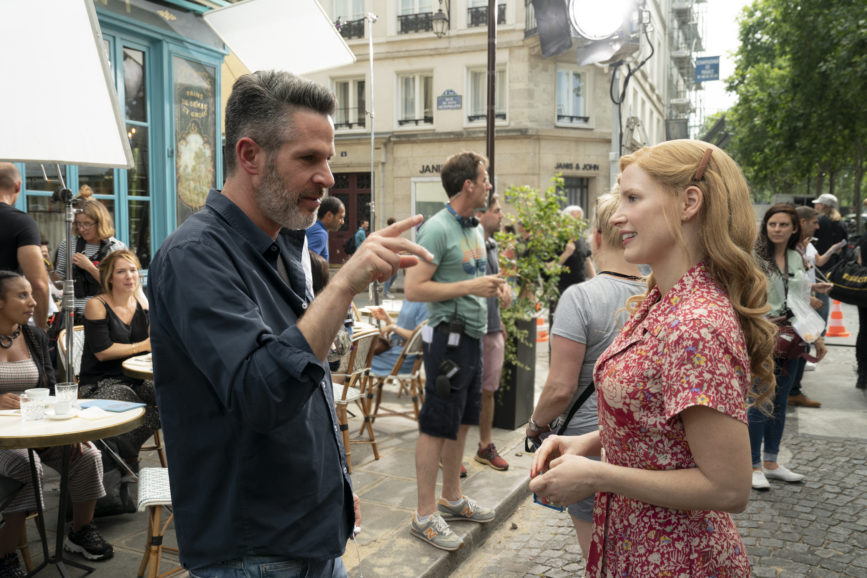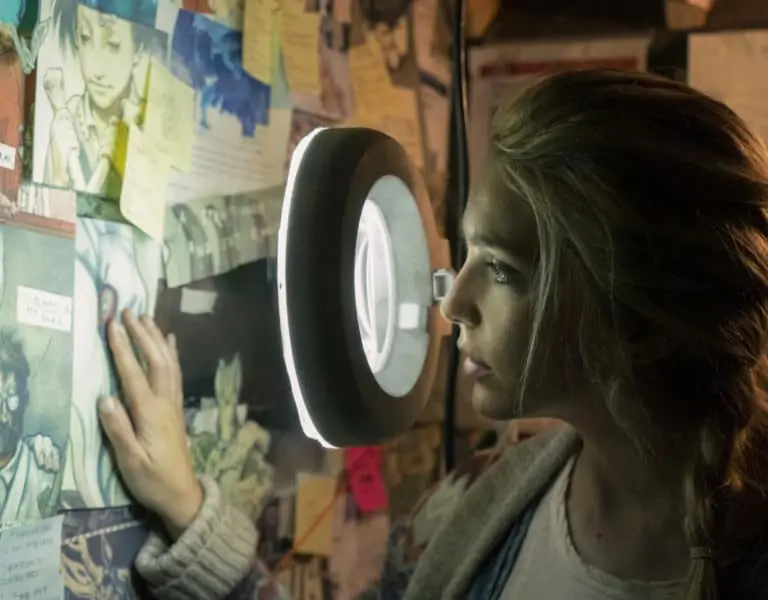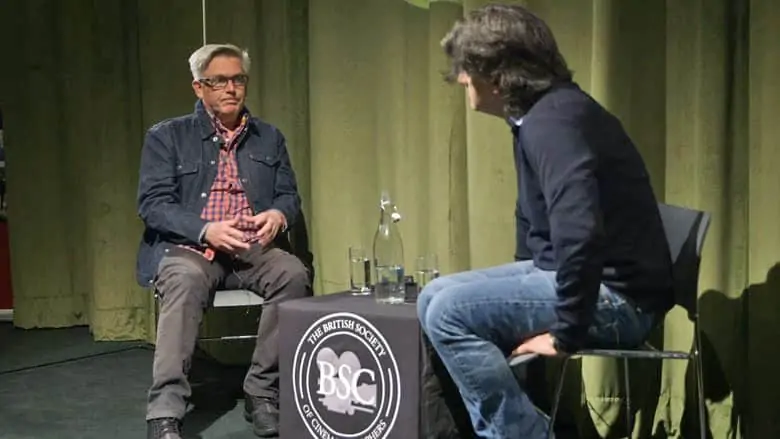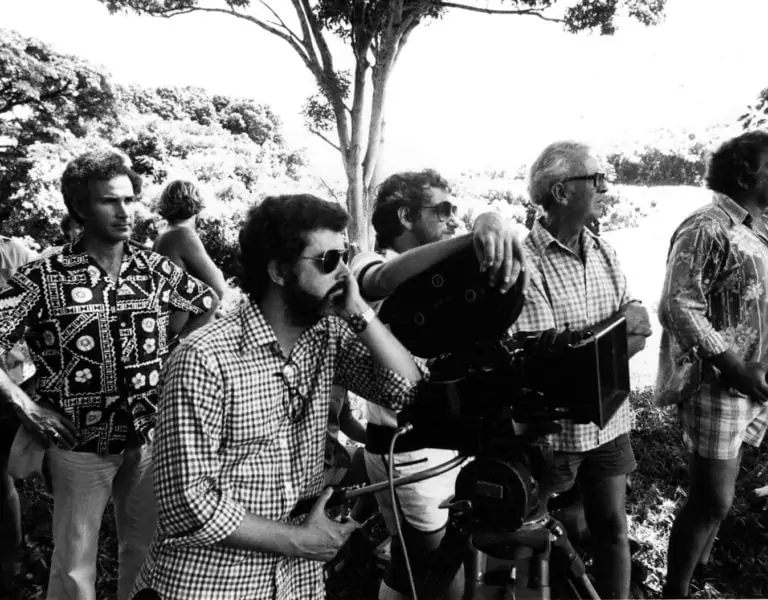THRILLS AND CREATIVE SKILLS
Tim Maurice-Jones BSC reveals how he lensed a globe-trotting production featuring an all-star cast, developing deliberately contrasting looks for each location, and using kinetic camerawork to capture the dynamic fight scenes.
After two years of restricted travel, there’s a certain logic to a spy thriller which puts beautiful people in beautiful places amid circumstances of intrigue and excitement. The 355 gives audiences all those things in spades, starring a roster of big-name talent with Jessica Chastain, Penélope Cruz, Fan Bingbing, Diane Kruger and Lupita Nyong’o as intelligence operatives in a chase through Morocco, China, France, the UK, and the USA to recover secret technology. Directed (and co-written) by Simon Kinberg, The 355 was photographed by Tim Maurice-Jones BSC.
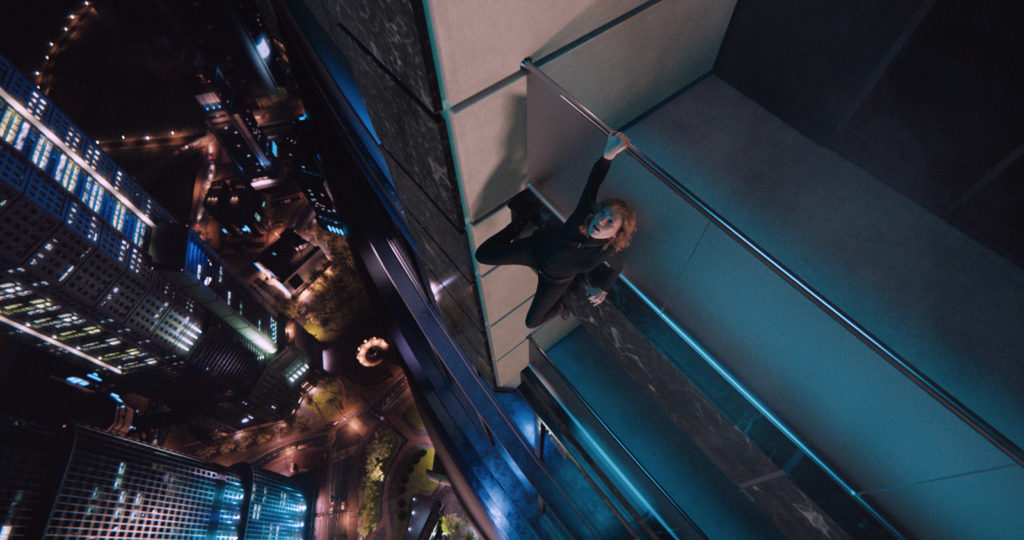
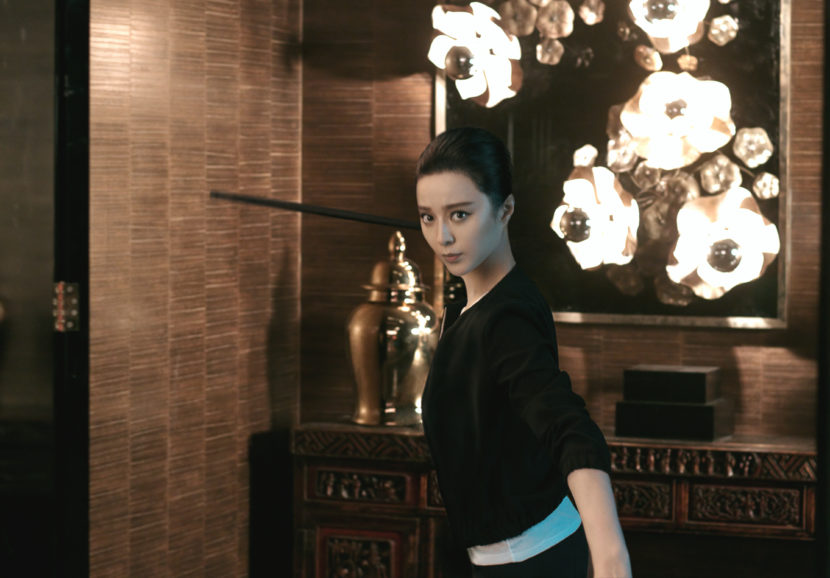
Maurice-Jones’s involvement in filmmaking grew from a chance distraction. “I started off drawing cartoons and publishing comics, and then I got a job at the BBC doing animation. Then, one day, when I was twenty-one, I wandered onto a film set and thought it was the most magical, incredible place to be. I didn’t know anything about cinematography, but when I watched the cameraman lighting the set and composing the shots it felt like a live action version of what I was already doing, and I instantly fell in love with the process.”
It was, Maurice-Jones remembers, a foundational moment. “I’d found where I belonged in the world. I started off assisting on documentaries, travelling around the world, then started directing and lighting music videos to get my showreel together. On every music video I would experiment with a different lighting style. I ended up doing ten years of music videos, and by the time I was twenty-eight I was a director of photography.”
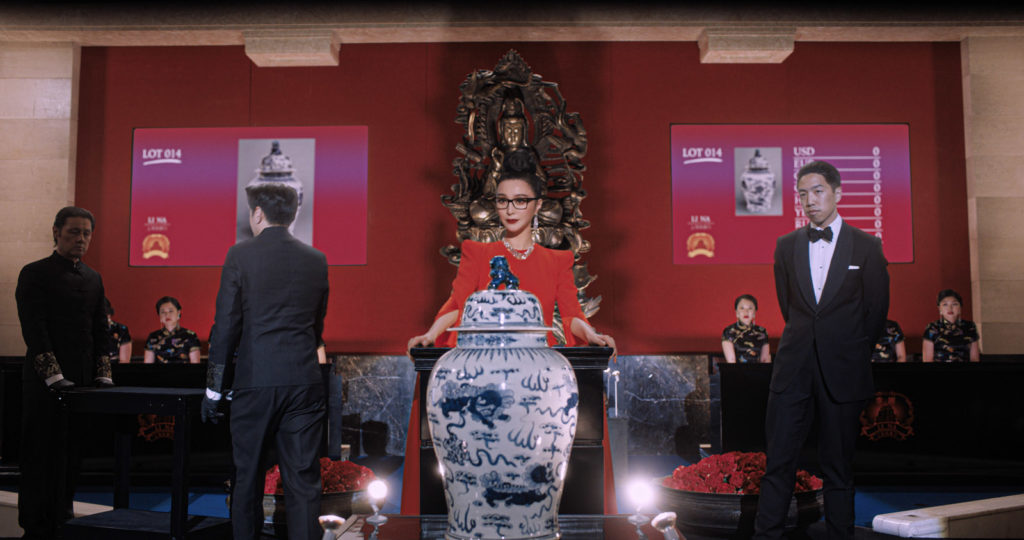
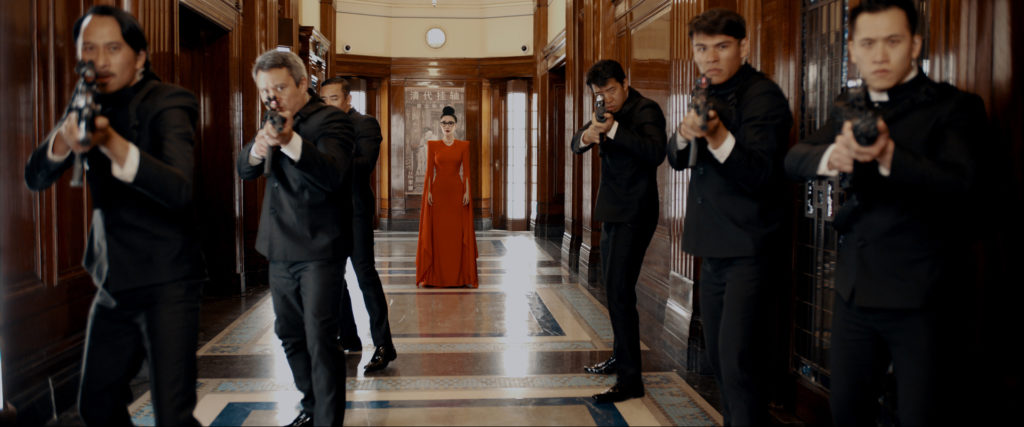
Perhaps understandably, given that kind of formative experience, Maurice-Jones’s philosophy includes a certain tolerance for hyperreality. “When I walk down the road, I see reality, but I’m not so interested in recreating that,” he says. “I want to create a stylised look at the world. If I’m in an environment where the light source is clearly a window or a practical, I’ll be more interested in creating something striking and having the actors looking great than creating a more realistic look. I enjoy watching movies that are shot in a very real way – I’m just not very good at it!”
The process of joining The 355 was unusually straightforward. Director Kinberg had enjoyed Maurice-Jones’s work on The Take, starring Idris Elba. “It wasn’t the usual way to get a movie,” he says. “It’s quite rare to have someone approaching me who knows exactly the style he wants to shoot it in, so I was already in a good position.” Kinberg’s film, though, could not entirely embrace the hard-edged photography of The Take. “I had a meeting with Simon and discovered that it wasn’t five guys, it was five Hollywood stars. My question was how do I do a gritty-looking spy thriller – with Hollywood actresses.”
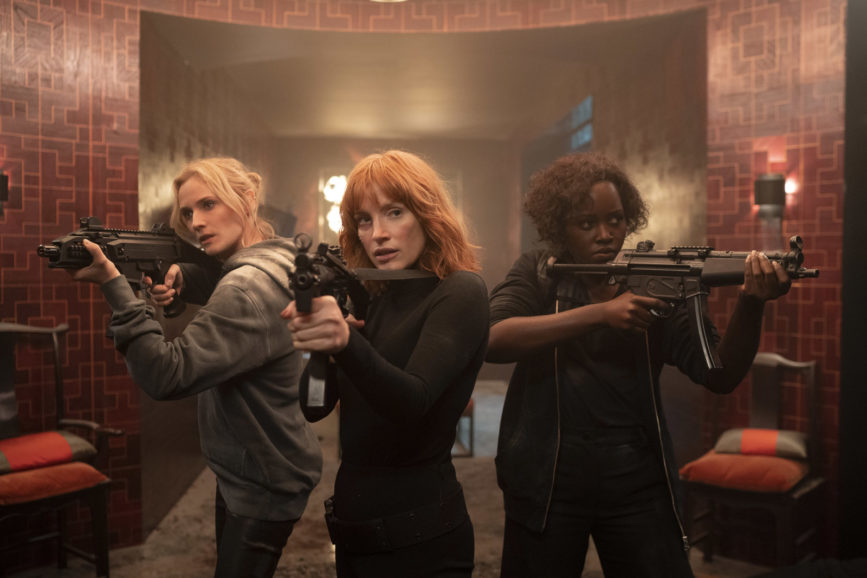
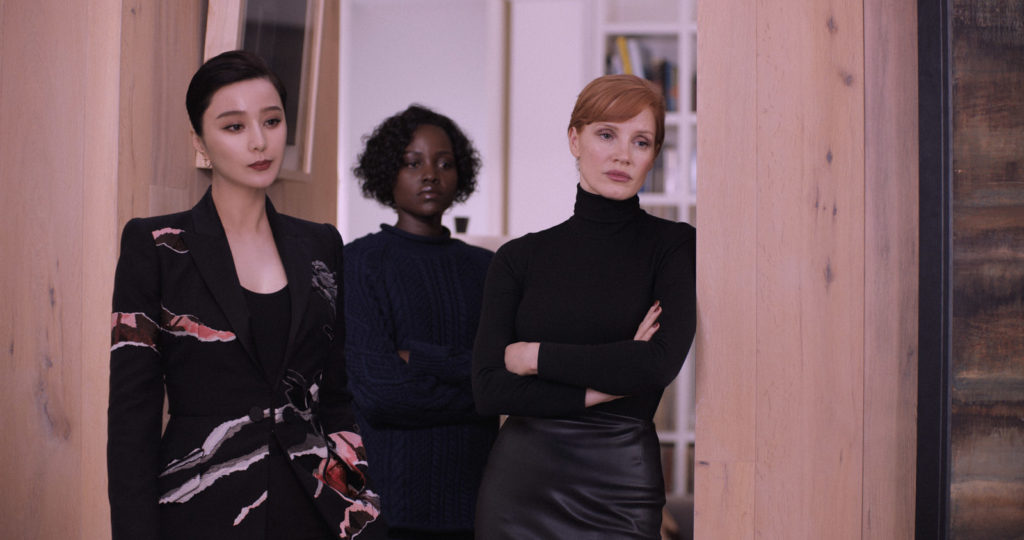
“I couldn’t let them fall into whatever light happens to be there,” Maurice-Jones muses. “This had to be very manicured.” Camera tests, he says, were crucial. “I was concerned about getting the correct light for each of them. What looked good on Jessica Chastain didn’t necessarily look right on Penélope Cruz or Lupita Nyong’o. Each actress had a style of key light that suited her best and I tried wherever possible to find a middle ground between reality and making it look like Charlie’s Angels where the skin is burned out. I want them to look beautiful but tough.”
Maurice-Jones’s ambitions for high gloss led, perhaps understandably, to the ARRI Alexa LF. “We knew they’d brought out the LF Mini because it was on 1917, but because it was still down as a prototype, we couldn’t get insurance to use it,” Maurice-Jones says, “so we had to use the full size LF camera. It’s heavy and unwieldy, and about half the film was handheld, so it became quite a workout for me and my operator Malcolm McLean. Simon wanted a lot of coverage, so as not to return to the same shot. That meant a lot more coverage than usual, so we had to work at a very fast pace.”
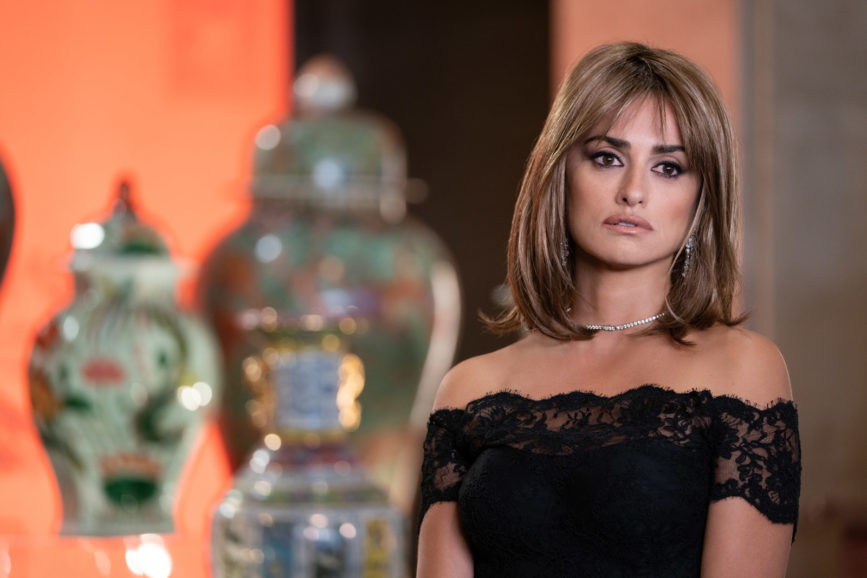
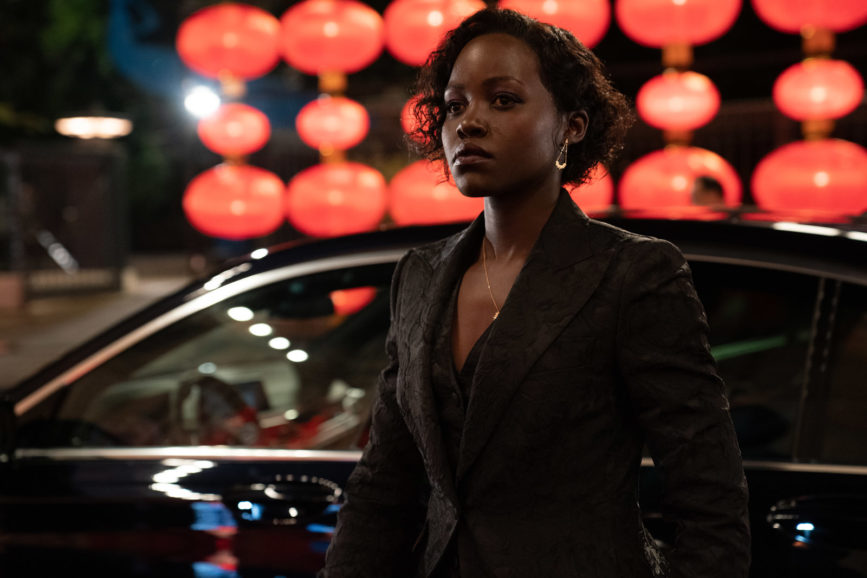
“I’ve shot many films on the Zeiss Super Speeds, and I’ve managed to get very different looks from them. If you compared Snatch, Revolver, The Take and Human Nature it would be hard to see they were shot on the same lenses,” Maurice-Jones points out. Still, something with larger coverage would be required for The 355, and “apart from not covering the sensor they would have been too harsh on the faces. I had a look at the Cookes, which I liked but were maybe too soft. I liked the way the Canon CN-Es looked as they were soft and warm; I felt they would be more sympathetic to skin tones but retained more contrast than the Cookes. I like to put a lot of lights in shot, often directly into the lens and I liked the way they handled the flare.”
Such a globe-trotting production inevitably involved a huge range of locations, although some of The 355‘s most notable set pieces were actually built in the studio. Maurice-Jones has, he says, a preference for “real locations. In a studio you can fall into a rabbit warren of tweaking, but if you’re on location and there’s only four places you can put a light it’s quite refreshing.” One example, a real-world bar, appears near the film’s conclusion was barely twelve feet wide and forty long.
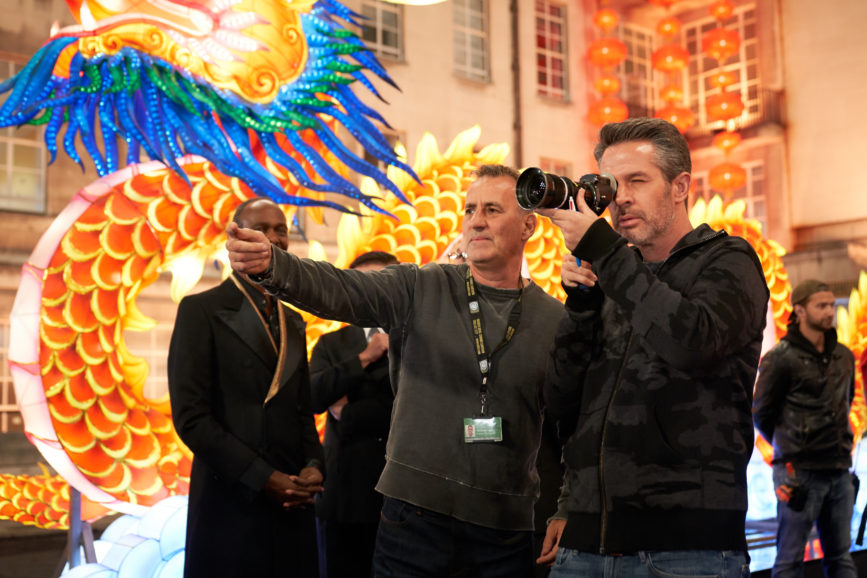
The film opens with two CIA agents using a Paris honeymoon as cover. Showcasing the film’s international locations, Maurice-Jones developed deliberately contrasting looks for each of them. “Paris was supposed to be a honeymoon,” Maurice-Jones says, “but when they sat at the cafe, it was overcast, so I had 18Ks backlighting them. I wanted Paris to have a summery, warm feel, then where you go to the German BND headquarters, which was [Diane Kruger’s] version of the CIA, it was very cold bright blue. The scenes in Hong Kong had more of a blue-green feel and Morocco was warm and sunny with sepia tones. The London scenes were more blue and a little desaturated.”
Other Paris locations include a chase sequence in a metro tunnel. “It was an actual tube station in Paris, one station and about four hundred yards of tunnel. I put a whole bunch of battery-operated fluorescent tubes along the entire tunnel. The problem was you could only have twelve people in the tunnel at one time. Costume and make up would come in, then after they left, I could finally bring in the cameras and set up that shot. Each time the shot changed we would have to repeat the process, so it was very time-consuming.”
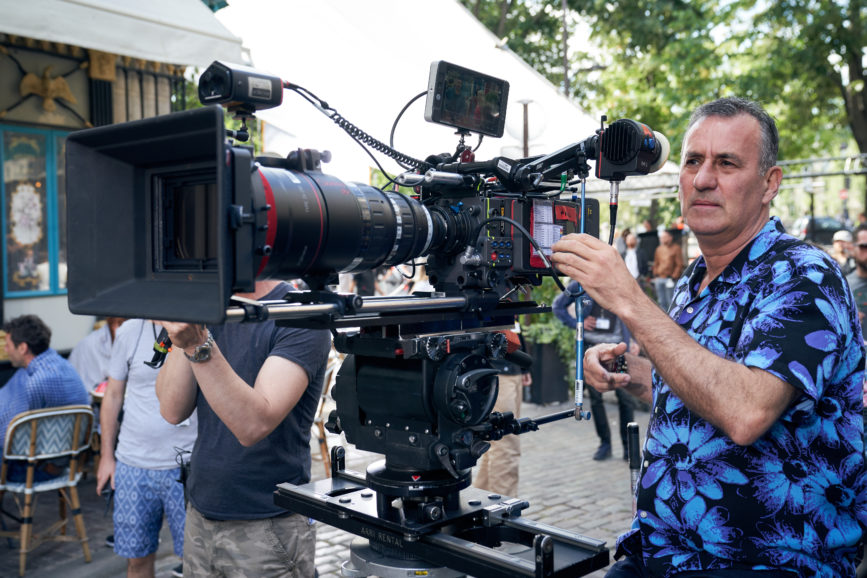
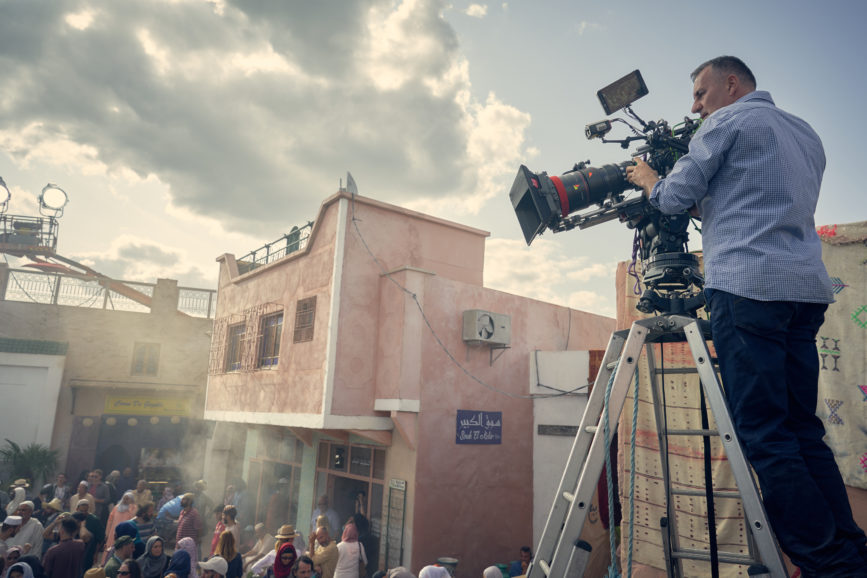
A key sequence in a Morocco marketplace was built on the Shepperton backlot. “As we were shooting in England, I had to assume that it would be overcast a lot of the time, which it turned out to be. Simon Elliott, the production designer, built a huge open square, with lots of covered passages and walkways. I had banks of cherry pickers with 18K HMIs just hammering in from one direction, which meant I never had to stop and wait for the sun.” Production designer Elliott’s work, Maurice-Jones recalls, was key: “He built a labyrinth of side streets and back alleys which we covered with different materials, things like transparent corrugated plastic, broken bamboo lines of washing, or latticework. I pushed my 18ks through them which gave each alleyway a different feel.”
Two other spectacular sets depict a safehouse and a hotel in China, with a luxury suite becoming the venue for a pivotal firefight. Both sets were built on the same stage to leverage a vast photographic backdrop that Maurice-Jones preferred over the post-production alternative. “I didn’t want to have greenscreen out the windows,” he confirms. “Then we’d have to do post on every shot, and I wouldn’t have control over how it looked. Simon Elliott came up with the fantastic idea of putting a translite through the entire hundred metres… we designed it out of focus, because it was only ten metres from the windows, and a tower block should be half a mile away.”
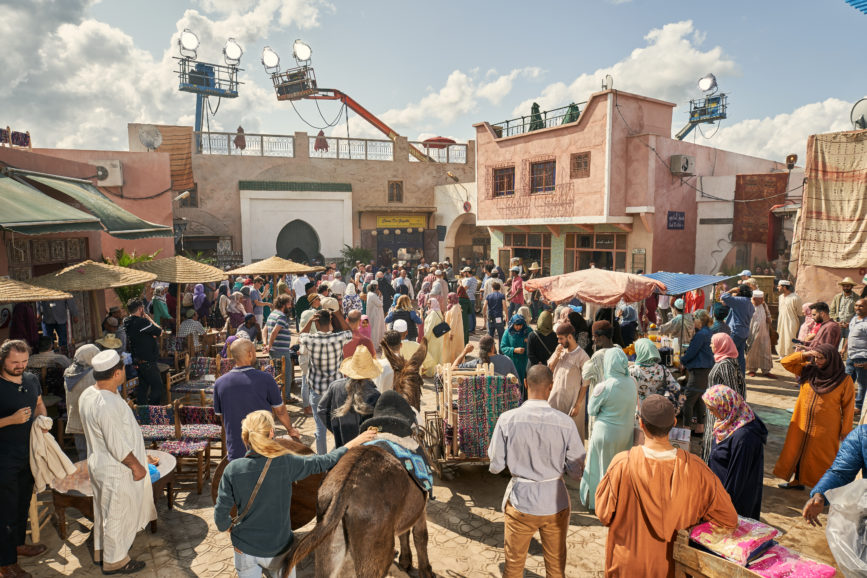
Given the production’s kinetic camerawork and the dynamism of fight scenes, Maurice-Jones was required to shoot – and light – that hotel room from every imaginable angle. He leveraged “quite a lot of practicals in the hotel. We had lamps, we had fire, quite a lot of natural sources anyway, so I let that play.” Even so, with a highly polished look well established, Maurice-Jones took care to finesse key moments: “If they were running or moving around the set, I let whatever ambiance was about light them, but whenever they stopped, I wanted them to stop in a flattering light, so i would have something waiting for them.”
The production’s one awkward moment came during a day exterior near the beginning of the film. “I really don’t like shooting outside in England,” Maurice-Jones admits. “The opening shot of the sequence at the docks is a big drone shot. It was overcast, and it cut directly to a shot in bright sunlight, then cuts to a shot that’s backlit, then side lit. It’s not great. We had four days to shoot the sequence and we didn’t have the luxury of waiting for the weather. That was all about sitting in the grade with Rob Pizzey at Goldcrest and trying to grade an overcast shot to look sunny and a sunny shot to look overcast. In situations like that, sometimes it’s less about cinematography and more about damage control!”
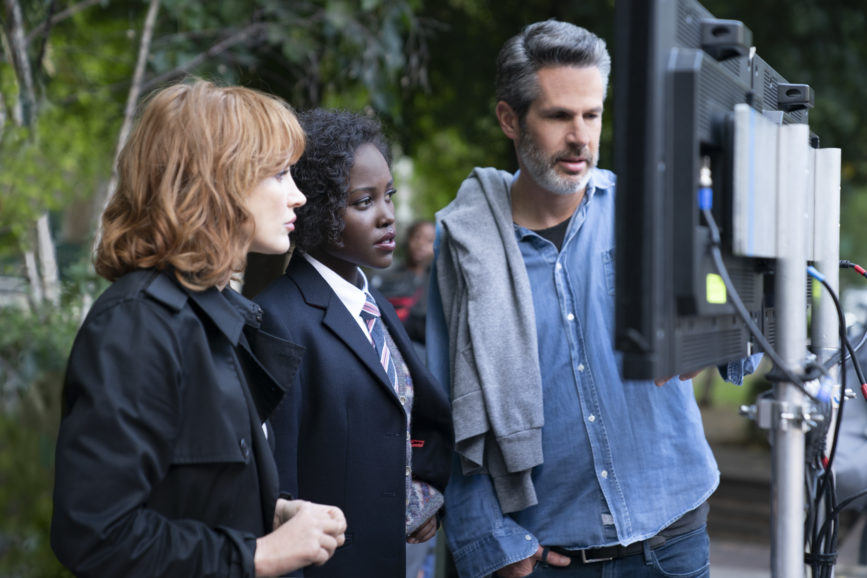
Maurice-Jones’s approach to monitoring is, as he puts it, “very basic – Rec. 709 out of the Alexa. I rarely spend much time with the DIT. I don’t use a LUT as I like to see exactly what I’m recording. When I have it looking good on that basic monitor, I know that when I get into the grade, I have a very strong starting point. As little as I do with the DIT, I really go to town in the grade.”
“Simon was in LA,” Maurice-Jones goes on, “When we had finished the grade we watched it, and Simon decided we had worried a little too much about the actors looking perfect. So, we went back over the whole movie, adding more contrast to give it a grittier look.” The 355 wrapped before the pandemic, although pickups shot during 2020 would encounter some related problems and the pandemic, Maurice-Jones says, ultimately delayed release by over a year. “It was shot two years ago, but then COVID hit, and Simon was very keen that it got a cinema release.”
Since completing The 355, Maurice-Jones has finished The Ipcress File, pursuing a very different and deliberately historic approach in both look and, uniquely, equipment. Also, “I just did The Expendables 4″, he continues, “with only three weeks prep! It was great, some of the biggest sets I’ve ever lit. Sylvester, Andy Garcia, Dolph Lundgren, Tony Jaa, Megan Fox. It was a huge amount of fun!”
